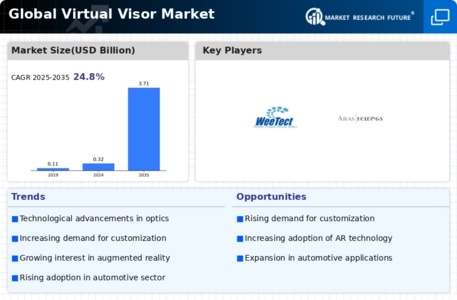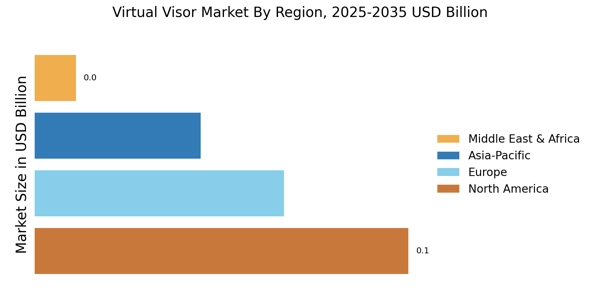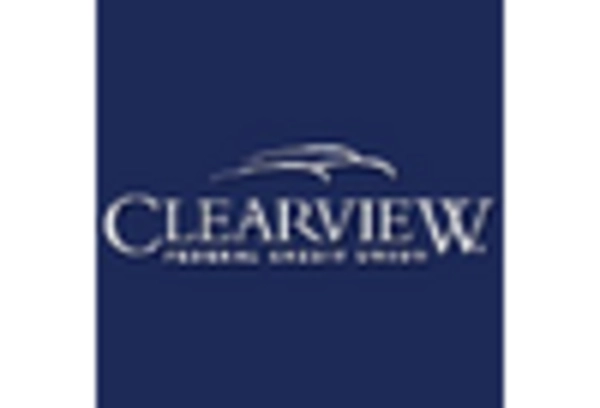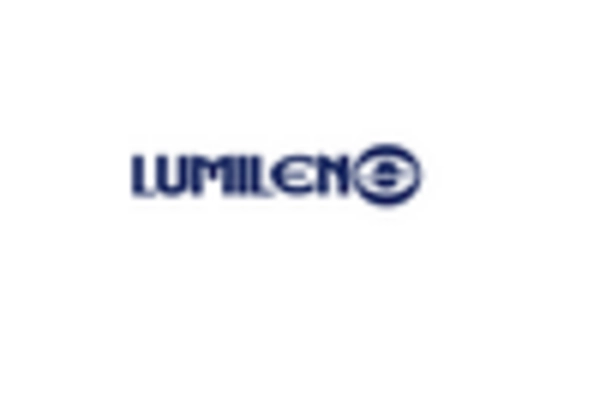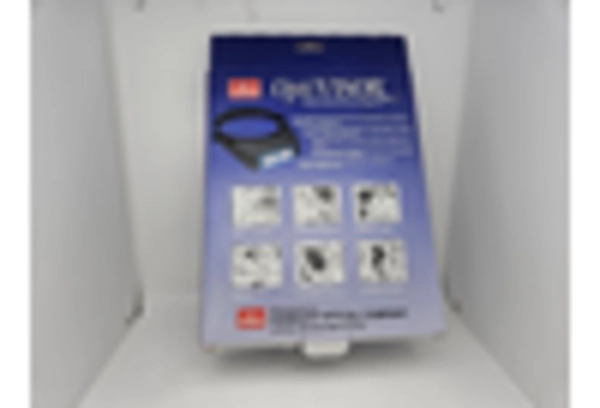Consumer Preference for Customization
In the current market landscape, consumer preferences are shifting towards personalized products, which is significantly impacting the Virtual Visor Market. Many consumers are seeking visors that not only serve functional purposes but also reflect their individual style and preferences. This trend is prompting manufacturers to offer customizable options, such as interchangeable lenses and adjustable features. Recent surveys indicate that approximately 40% of consumers are willing to pay a premium for personalized automotive accessories. This inclination towards customization is likely to drive innovation within the Virtual Visor Market, as companies strive to meet the diverse needs of their clientele and differentiate themselves in a competitive market.
Sustainability and Eco-Friendly Materials
The growing emphasis on sustainability is influencing various industries, including the Virtual Visor Market. Consumers are increasingly aware of environmental issues and are seeking products made from eco-friendly materials. Manufacturers are responding by developing visors that utilize sustainable resources, such as recycled plastics and biodegradable components. This shift not only aligns with consumer values but also enhances brand reputation. Market Research Future indicates that products marketed as sustainable can command higher prices, with consumers willing to invest in environmentally responsible options. As the demand for sustainable automotive accessories rises, the Virtual Visor Market is likely to see a significant transformation, with a focus on integrating eco-friendly practices into product development.
Rising Demand for Enhanced Safety Features
Safety remains a paramount concern in the automotive sector, driving the Virtual Visor Market towards solutions that enhance driver awareness and reduce accidents. The integration of virtual visors with advanced safety features, such as collision detection and lane-keeping assistance, is becoming increasingly prevalent. According to recent data, nearly 30% of consumers express a preference for vehicles equipped with such safety technologies. This growing demand is prompting manufacturers to innovate and develop visors that not only provide sun protection but also contribute to overall vehicle safety. As the automotive industry continues to prioritize safety, the Virtual Visor Market is expected to expand, with a focus on creating products that align with these consumer expectations.
Technological Innovations in Display Systems
The Virtual Visor Market is experiencing a surge in technological innovations, particularly in display systems. Advancements in augmented reality (AR) and heads-up display (HUD) technologies are transforming traditional visor designs into interactive interfaces. These innovations allow drivers to access navigation, speed, and other critical information without diverting their attention from the road. As a result, the demand for smart visors is projected to grow, with estimates suggesting a compound annual growth rate (CAGR) of over 15% in the coming years. This trend indicates a shift towards integrating more sophisticated technologies into automotive accessories, thereby enhancing user experience and safety. The Virtual Visor Market is likely to benefit from these developments, as manufacturers strive to incorporate cutting-edge features that appeal to tech-savvy consumers.
Shift Towards Electric and Autonomous Vehicles
The transition towards electric and autonomous vehicles is reshaping the automotive landscape, thereby influencing the Virtual Visor Market. As more manufacturers invest in electric vehicle (EV) technology, the need for innovative accessories that complement these vehicles is becoming apparent. Virtual visors, which can integrate seamlessly with the digital interfaces of EVs, are likely to gain traction. Furthermore, the rise of autonomous driving technology necessitates new forms of driver interaction, where virtual visors can play a crucial role in providing information and entertainment. Market analysts predict that the demand for virtual visors in electric and autonomous vehicles could increase by over 20% in the next five years, highlighting the potential for growth within the Virtual Visor Market.

